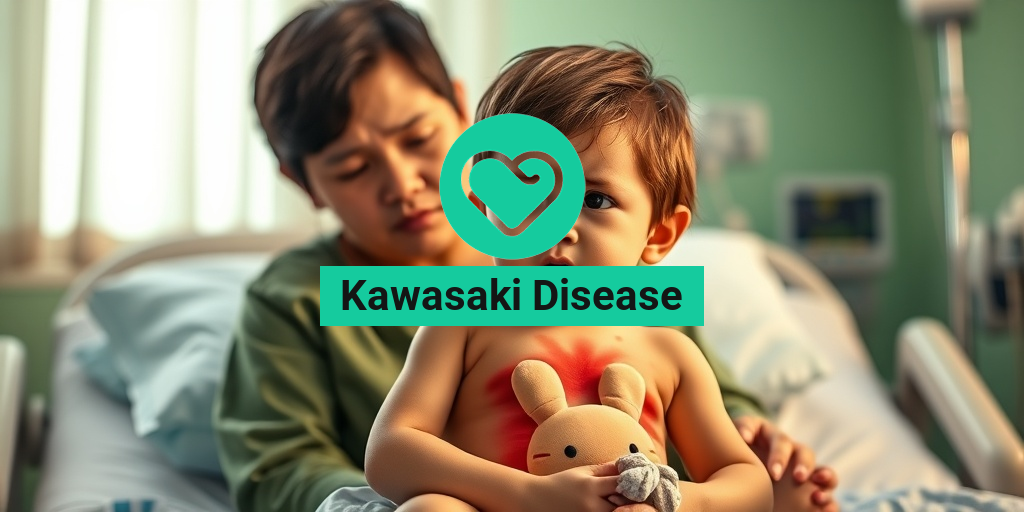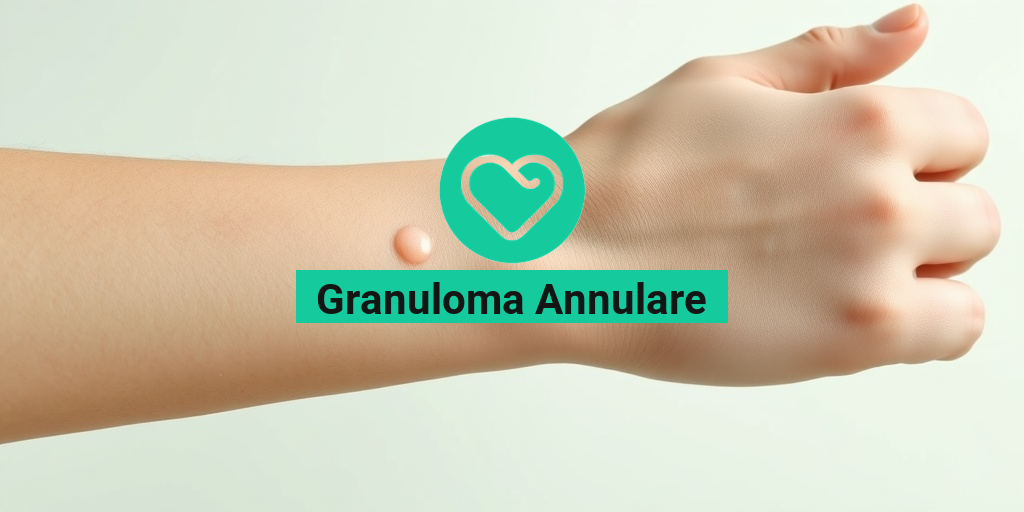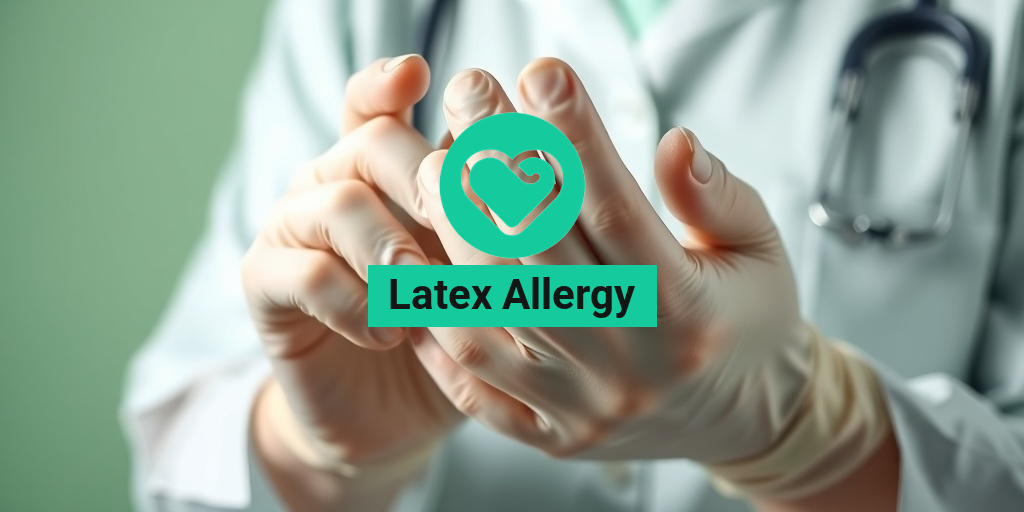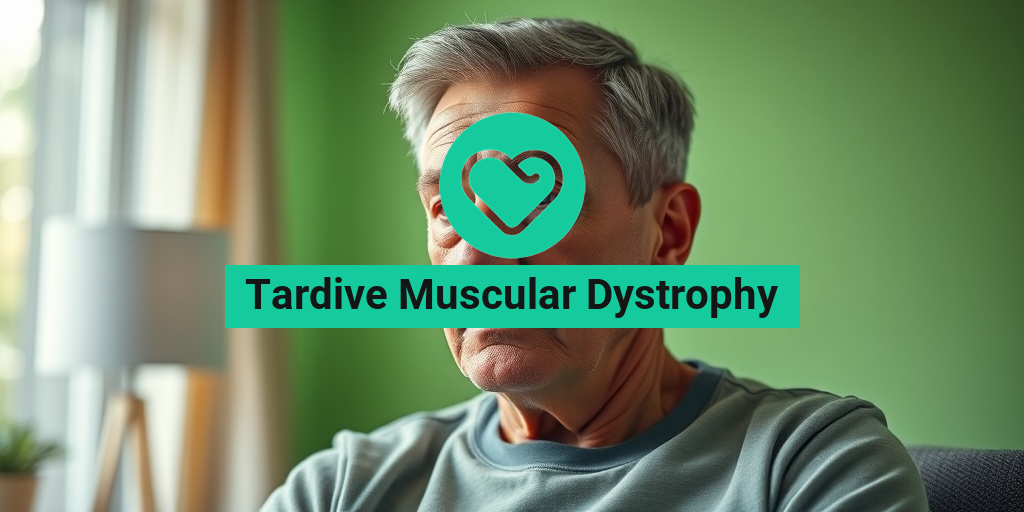What Is Kawasaki Disease?
Kawasaki Disease is a rare but serious condition that primarily affects children, particularly those under the age of five. It is an autoimmune disease that causes inflammation in the walls of blood vessels throughout the body, leading to a range of complications if not treated promptly. The exact cause of Kawasaki Disease remains unknown, but it is believed to involve a combination of genetic and environmental factors.
The disease was first identified in Japan in the late 1960s by Dr. Tomisaku Kawasaki, and since then, it has been recognized globally. While Kawasaki Disease is not contagious, it can lead to significant health issues, particularly affecting the heart and coronary arteries.
Understanding the Mechanism
In Kawasaki Disease, the immune system mistakenly attacks the body’s own blood vessels, causing inflammation. This can lead to serious complications, such as:
- Coronary artery aneurysms: These are bulges in the arteries that can lead to heart problems.
- Myocarditis: Inflammation of the heart muscle, which can affect its ability to pump blood.
- Pericarditis: Inflammation of the lining around the heart.
Early diagnosis and treatment are crucial to prevent these complications. If you suspect your child may have Kawasaki Disease, it’s essential to seek medical attention immediately.
Kawasaki Disease Symptoms
The symptoms of Kawasaki Disease can vary widely, but they typically develop in phases. Recognizing these symptoms early can lead to timely treatment and better outcomes. Here are the most common symptoms to watch for:
Initial Symptoms
- Fever: A high fever lasting more than five days is often the first sign.
- Rash: A rash may appear on the torso and genital area, which can vary in appearance.
- Swollen lymph nodes: Particularly in the neck area, lymph nodes may become enlarged.
Subsequent Symptoms
- Red eyes: Conjunctivitis without discharge is common.
- Changes in the lips and mouth: This includes cracked lips, a red tongue (often referred to as “strawberry tongue”), and redness in the mouth.
- Swollen hands and feet: These may become red and swollen, and peeling skin can occur as the disease progresses.
Long-term Effects
If Kawasaki Disease is not treated, it can lead to long-term complications, particularly concerning heart health. Children who have had Kawasaki Disease are at risk for:
- Coronary artery disease: This can develop years after the initial illness.
- Heart failure: Resulting from damage to the heart muscle.
It’s important to note that while Kawasaki Disease primarily affects children, it can also occur in adults, although this is much rarer. If you or someone you know is experiencing symptoms that align with Kawasaki Disease, consulting a healthcare professional is crucial.
For more detailed information and resources on Kawasaki Disease, consider visiting Yesil Health AI, where you can find evidence-based health answers tailored to your needs.
In conclusion, Kawasaki Disease is a serious condition that requires prompt medical attention. By being aware of the symptoms and seeking treatment early, you can help ensure the best possible outcome for affected children. Remember, knowledge is power when it comes to health! 💪❤️
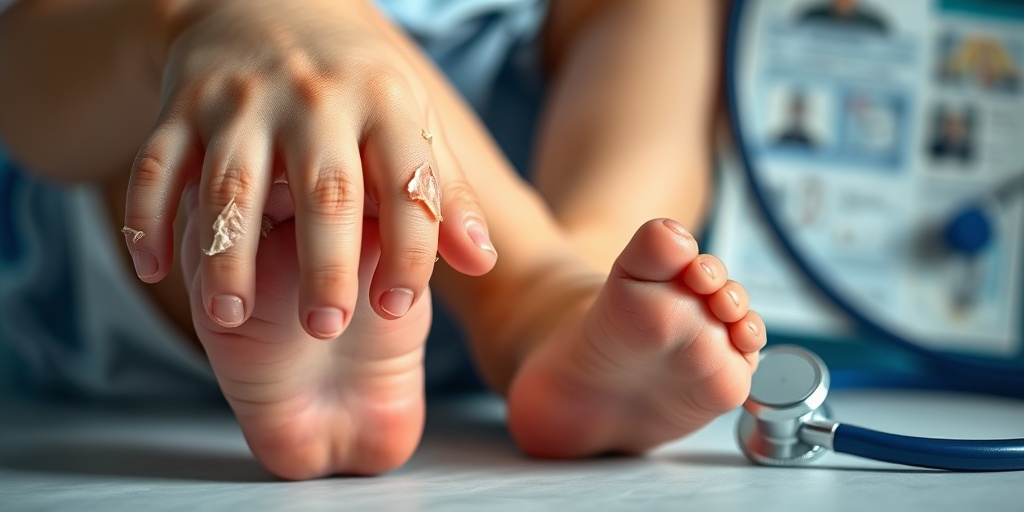
Kawasaki Disease Causes
Kawasaki Disease is a rare but serious condition that primarily affects children, leading to inflammation of the blood vessels throughout the body. While the exact cause of Kawasaki Disease remains unknown, researchers believe that a combination of genetic and environmental factors may play a role in its development.
Possible Infectious Triggers
One of the leading theories suggests that Kawasaki Disease may be triggered by an infectious agent. Some studies have indicated that certain viral or bacterial infections could initiate the immune response that leads to the symptoms of Kawasaki Disease. Common culprits that have been investigated include:
- Respiratory viruses: Such as adenovirus and influenza.
- Enteroviruses: Including coxsackievirus.
- Other pathogens: Such as Mycoplasma pneumoniae.
However, it’s important to note that no specific infectious agent has been definitively linked to Kawasaki Disease, and more research is needed to understand this connection fully.
Genetic Factors
Genetics may also play a significant role in the susceptibility to Kawasaki Disease. Some children may inherit a predisposition to the condition, which could explain why it is more prevalent in certain ethnic groups, particularly those of Asian descent. Studies have shown that siblings of affected children have a higher risk of developing the disease, suggesting a genetic component.
Environmental Influences
Environmental factors, such as exposure to pollutants or toxins, may also contribute to the onset of Kawasaki Disease. Some researchers have hypothesized that factors like:
- Seasonal variations: The disease is more common in the winter and spring months.
- Geographical location: Higher incidence rates have been observed in certain regions, particularly in Japan.
These environmental triggers could interact with genetic predispositions, leading to the development of Kawasaki Disease in susceptible individuals.
Kawasaki Disease Risk Factors
Understanding the risk factors associated with Kawasaki Disease can help in early detection and management of the condition. While anyone can develop Kawasaki Disease, certain factors may increase the likelihood of its occurrence.
Age and Gender
Kawasaki Disease predominantly affects children under the age of 5, with the highest incidence occurring in toddlers. Interestingly, boys are more likely to develop the disease than girls, with a ratio of approximately 1.5:1. This gender disparity suggests that hormonal or genetic factors may influence susceptibility.
Ethnicity
Ethnicity is another significant risk factor for Kawasaki Disease. The condition is most commonly reported in children of Asian descent, particularly those of Japanese and Korean heritage. Studies have shown that children from these backgrounds are at a higher risk, which may be linked to genetic factors that predispose them to the disease.
Family History
A family history of Kawasaki Disease can also increase a child’s risk. If a sibling or parent has had the disease, the likelihood of another child in the family developing it is higher. This familial connection underscores the potential genetic component of Kawasaki Disease.
Other Health Conditions
Children with certain pre-existing health conditions may also be at an increased risk for Kawasaki Disease. For example, those with autoimmune disorders or other inflammatory conditions may have a heightened susceptibility due to their immune system’s response. Additionally, children who have had previous infections may be more vulnerable to developing Kawasaki Disease.
In summary, while the exact causes of Kawasaki Disease remain elusive, understanding the potential triggers and risk factors can aid in early recognition and treatment. If you suspect your child may be showing symptoms of Kawasaki Disease, such as a persistent fever, rash, or swollen lymph nodes, it is crucial to seek medical attention promptly. Early diagnosis and treatment can significantly improve outcomes and reduce the risk of serious complications. 🌟
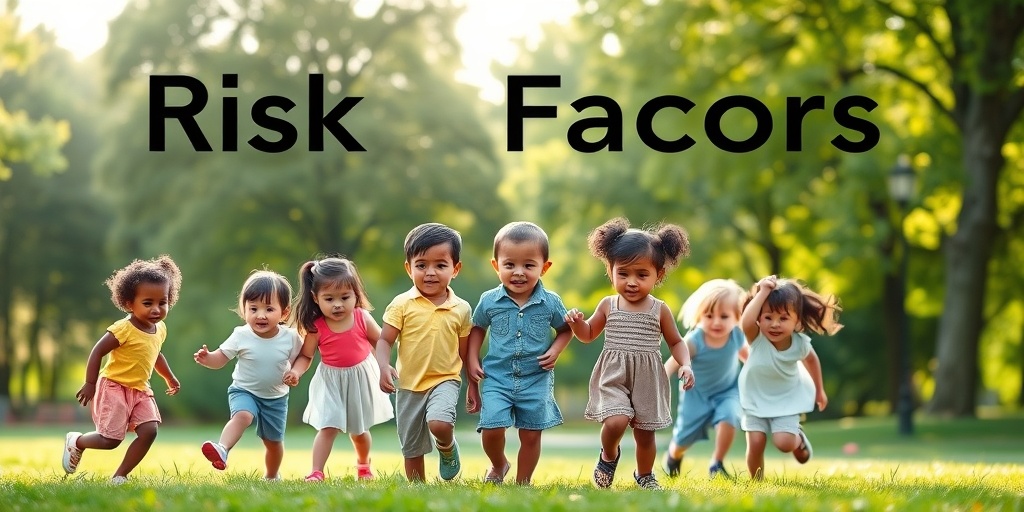
Kawasaki Disease Diagnosis
Kawasaki Disease is a rare but serious condition that primarily affects children, leading to inflammation of the blood vessels. Early diagnosis is crucial to prevent complications, such as heart problems. But how is Kawasaki Disease diagnosed? Let’s explore the key aspects of the diagnostic process.
Understanding the Symptoms
The first step in diagnosing Kawasaki Disease is recognizing its symptoms. Common signs include:
- Fever: A high fever lasting more than five days is often the first symptom.
- Rash: A distinctive rash may appear on the torso and extremities.
- Swollen lymph nodes: Particularly in the neck area.
- Red eyes: Conjunctivitis without discharge.
- Changes in lips and mouth: Cracked lips, a red tongue (often referred to as “strawberry tongue”), and redness in the mouth.
These symptoms can vary from child to child, making it essential for parents to be vigilant. If you notice these signs, consult a healthcare professional promptly. 🩺
Diagnostic Criteria
To diagnose Kawasaki Disease, doctors typically use specific criteria established by the American Heart Association. A child must exhibit:
- Fever lasting more than five days.
- At least four of the following five symptoms:
- Rash
- Swollen lymph nodes
- Red eyes
- Changes in lips and mouth
- Swelling or redness in the hands and feet
In some cases, a child may present with incomplete Kawasaki Disease, where not all criteria are met. In such instances, doctors may rely on laboratory tests and imaging studies to support the diagnosis.
Laboratory Tests and Imaging
While there is no single test for Kawasaki Disease, several laboratory tests can help confirm the diagnosis:
- Blood tests: These can reveal elevated white blood cell counts, anemia, and increased inflammatory markers.
- Urine tests: To check for signs of inflammation or infection.
- Echocardiogram: An ultrasound of the heart to assess any damage to the coronary arteries.
These tests are vital in ruling out other conditions that may mimic Kawasaki Disease, such as viral infections or other autoimmune disorders.
Kawasaki Disease Treatment Options
Once diagnosed, prompt treatment for Kawasaki Disease is essential to reduce the risk of serious complications, particularly those affecting the heart. Here’s a look at the primary treatment options available.
Intravenous Immunoglobulin (IVIG)
The cornerstone of Kawasaki Disease treatment is Intravenous Immunoglobulin (IVIG). This therapy helps reduce inflammation and the risk of coronary artery damage. Administered in a hospital setting, IVIG is typically given within the first ten days of illness for maximum effectiveness.
Aspirin Therapy
Alongside IVIG, aspirin is often prescribed to help reduce fever and inflammation. In the acute phase of the disease, high doses may be used, followed by lower doses for several weeks to prevent blood clots. It’s important to follow the doctor’s instructions regarding aspirin use, especially in children, due to the risk of Reye’s syndrome.
Monitoring and Follow-Up Care
After initial treatment, children diagnosed with Kawasaki Disease require careful monitoring. Regular follow-up appointments are essential to:
- Assess heart health through echocardiograms.
- Monitor for any late-onset complications.
- Adjust medications as necessary.
In some cases, additional treatments may be needed if complications arise, such as coronary artery aneurysms. These may include more aggressive therapies or surgical interventions.
Supportive Care
In addition to medical treatments, supportive care plays a vital role in recovery. This includes:
- Hydration: Ensuring the child stays well-hydrated.
- Rest: Allowing ample time for recovery.
- Emotional support: Providing reassurance and comfort during this challenging time.
Understanding Kawasaki Disease and its treatment options can empower parents and caregivers to seek timely medical attention and support their child’s recovery effectively. 🌈
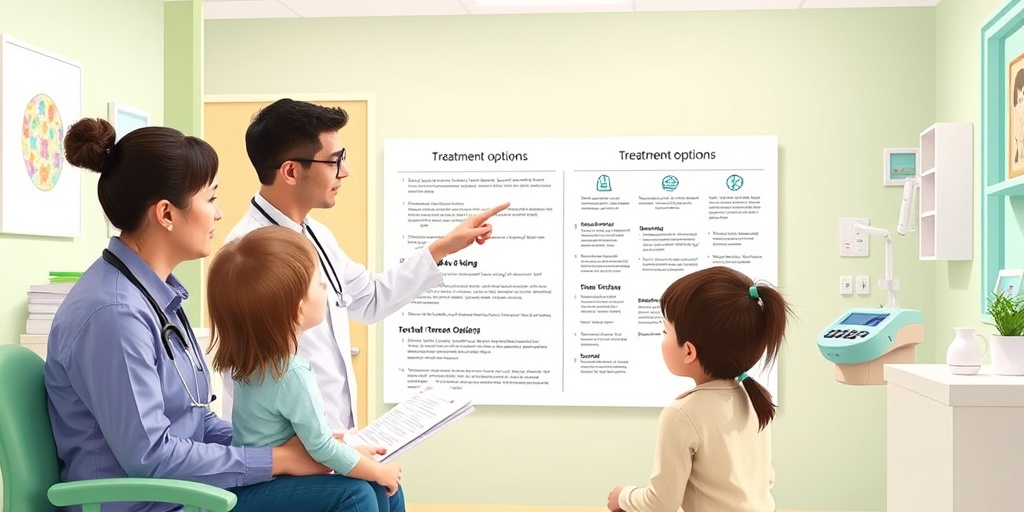
Kawasaki Disease Complications
Kawasaki Disease is a rare but serious condition that primarily affects children, leading to inflammation of the blood vessels throughout the body. While many children recover fully with appropriate treatment, there are potential complications that can arise if the disease is not diagnosed and treated promptly. Understanding these complications is crucial for parents and caregivers.
Cardiovascular Complications
One of the most significant risks associated with Kawasaki Disease is its potential impact on the heart. The inflammation can lead to several cardiovascular complications, including:
- Coronary Artery Aneurysms: This is the most serious complication, where the coronary arteries become dilated or weakened, potentially leading to heart attacks or other serious heart issues later in life.
- Myocarditis: Inflammation of the heart muscle can occur, affecting the heart’s ability to pump blood effectively.
- Pericarditis: Inflammation of the lining around the heart can cause chest pain and other symptoms.
Regular follow-up with a cardiologist is essential for children who have had Kawasaki Disease to monitor for these complications.
Other Potential Complications
In addition to cardiovascular issues, Kawasaki Disease can lead to other complications, including:
- Joint Problems: Some children may experience arthritis or joint pain during or after the illness.
- Vision Issues: Inflammation can affect the eyes, leading to conditions such as conjunctivitis or uveitis.
- Skin Reactions: A rash is common during the illness, but some children may develop peeling skin or other dermatological issues as they recover.
Awareness of these complications can help parents seek timely medical attention and ensure their child receives the best possible care.
Kawasaki Disease Recovery and Outlook
The recovery process for Kawasaki Disease varies from child to child, but with early diagnosis and treatment, the outlook is generally positive. Understanding the recovery process can help alleviate concerns for parents and caregivers.
Immediate Recovery Phase
After the initial treatment, which often includes high doses of intravenous immunoglobulin (IVIG) and aspirin, most children begin to show improvement within a few days. Symptoms such as fever, rash, and swelling typically resolve, and parents may notice their child returning to normal activities. However, close monitoring is essential during this phase to watch for any complications.
Long-Term Outlook
For many children, the long-term outlook after Kawasaki Disease is excellent. Studies indicate that:
- Most children recover fully: With appropriate treatment, many children do not experience lasting effects.
- Regular follow-ups are crucial: Children who have had Kawasaki Disease should have regular check-ups with a pediatric cardiologist to monitor heart health.
- Awareness of symptoms: Parents should be vigilant for any signs of complications, such as chest pain or unusual fatigue, and seek medical advice promptly.
Emotional and Psychological Recovery
Beyond physical recovery, it’s important to consider the emotional and psychological aspects of recovery. Children may experience anxiety or stress related to their illness. Providing a supportive environment, encouraging open communication, and seeking professional help if needed can aid in their overall recovery.
In summary, while Kawasaki Disease can lead to serious complications, early diagnosis and treatment significantly improve the prognosis. With proper care and monitoring, most children can look forward to a healthy future. 🌈

Frequently Asked Questions about Kawasaki Disease
What is Kawasaki Disease?
Kawasaki Disease is a rare but serious condition that primarily affects children. It causes inflammation in the walls of blood vessels throughout the body, which can lead to complications if not treated promptly.
What are the symptoms of Kawasaki Disease?
The symptoms of Kawasaki Disease can include:
- Fever lasting more than five days
- Rash on the torso and genital area
- Swollen lymph nodes in the neck
- Red eyes without discharge
- Cracked lips and a red, swollen tongue
How is Kawasaki Disease diagnosed?
Diagnosis is typically based on clinical criteria, including the presence of fever and other symptoms. Doctors may also conduct blood tests and imaging studies to assess heart health and rule out other conditions.
What is the treatment for Kawasaki Disease?
Treatment usually involves high doses of intravenous immunoglobulin (IVIG) and aspirin to reduce inflammation and prevent heart complications. Early treatment is crucial for the best outcomes.
Is Kawasaki Disease contagious?
No, Kawasaki Disease is not contagious. The exact cause is unknown, but it is believed to involve a combination of genetic and environmental factors.
Can adults get Kawasaki Disease?
While Kawasaki Disease primarily affects children, there have been rare cases reported in adults. Symptoms and treatment are similar, but the condition is much less common in older populations.
What are the long-term effects of Kawasaki Disease?
If treated promptly, most children recover fully. However, some may experience long-term heart issues, such as coronary artery aneurysms. Regular follow-up with a healthcare provider is essential for monitoring heart health.
Where can I find more information about Kawasaki Disease?
For more detailed information, consider visiting reputable health websites or consulting with a healthcare professional who specializes in pediatric conditions.

